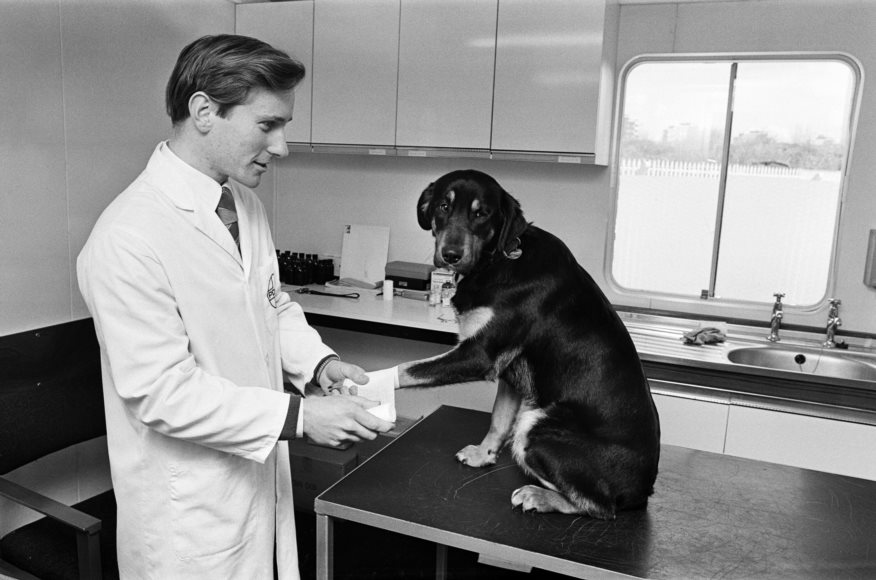Retrospective: A Brief History of Veterinary Medicine

The history of veterinary medicine has seen tremendous change over the past 100 years. It’s hard for us to remember that there was a time, not that long ago, when cats, dogs, rabbits, and other domestic animals weren’t cared for by a veterinarian.
In fact, it wasn’t until the early 1900s that pets began to more commonly receive medical care. Horses that were the primary focus of veterinary medical care, though, as they also served a function as transportation.
Oakland Veterinary Referral Services explores ways the field has changed and how far the history of veterinary medicine has come!
The Early Roots of Veterinary Medicine
The first known veterinary practice came into being in 9,000 BC in the Middle East. Sheep herders used rudimentary medical skills to treat their animals, which included the dogs that watched over their herds. Thousands of years later, in Egypt between 4,000 – 3,000 BC, medical treatment of animals became more common, but was still largely undeveloped. Ancient humans began domesticating cats, fowl, and dogs, and their owners considered them as members of their household–like many of us do today.
In approximately 1,900 BC, someone captured the first written accounts of veterinary medicine in four sacred Hindu texts. Within these texts, two distinct writings outlined the fields of human and animal medicine. Millennia later, in 1850, archaeologists discovered fragments of an ancient veterinary medical textbook made of papyrus. This text covers diseases relating to birds, cattle, dogs, and fish. Horses were the primary focus of ancient medical care as they were economically important for transportation, agriculture, and trade.
The Last Few Centuries of Veterinary History
In the 1760s, Claude Bourgelat established the first school of veterinary medicine in Lyon, France. Popular modern thought is that this was the founding of veterinary medicine, despite some level of animal medicine predating 9,000 BC. With the opening of the school in France, the scientific study of veterinary medicine was officially born.
As human medicine flourished and progressed through the last few centuries, so did veterinary medicine. In the 1700 and 1800s, we discovered treatments for cholera, Typhoid fever, and tuberculosis. We could then apply those treatments to protecting farm animals from these same deadly diseases. In Britain, the field of veterinary medicine had its roots in the Odiham Agricultural Society. The Society was the first to apply scientific principles to the treatment of animals. From there, another institution was born, the London Veterinary College, in 1791.
In America in 1863, the American Veterinary Medical Association came into being as a way to promote the field. Its purpose was to oversee the advancement of veterinary medicine and its practitioners. The Food and Drug Administration (FDA) added a Veterinary Medical Branch in 1965 to oversee veterinary pharmaceuticals. It later became the Center for Veterinary Medicine (CVM). The work of the CVM is still essential in that it oversees regulations relating to food, medicine, and other products for animals.
The Rise of Technology
Despite these advancements, only in the past 30 years has there been a huge shift in veterinary medicine. We’ve moved away from a focus on medical care only for livestock. Veterinarians opened thousands of animal hospitals devoted to the care of cats and dogs and other small pets. These small, furry creatures have moved into our homes and hearts and have family status.
Advancements in veterinary technology and diagnostics continue to improve our ability to detect diseases early. This motivated regular wellness exams to catch help prevent disease or detect it early. Wellness and preventive care allows us to give our pets a better chance of good health and a higher quality of life. Using tools like digital radiology, advanced diagnostic and surgical equipment, and pharmaceuticals, we are better equipped to successfully treat them and keep them living longer.
Attitudes about animals and their status have also prompted changes in how we view wellness care. It now includes things such as dental cleanings, grooming, and alternative treatments like massage and acupuncture. Thirty years ago, the only veterinary equipment for diagnosis was the x-ray. We now have digital x-ray, ultrasound, MRI, advanced laboratory testing, laparoscopic technology, and more.
Anesthesia and anesthetic monitoring for animals has also made leaps and bounds, making surgery safer and more effective for our pets. With a better understanding of animal pain, we are able to manage pain and discomfort in our pets with new medications and alternative therapies. New treatments for cancer mean we can frequently give pet owners much more time with their pets, and give the pets a good quality of life during those extra months or years.
Along with these medical changes, technology now enables us to communicate with our patients in ways that increase speed, convenience, and efficiency. Texting, online booking, apps–we’re much more connected. There is no aspect of veterinary medicine or care that has not changed. The use of new technologies continues to increase the speed of change. Those changes make it possible for us to care for our animal companions with increasing success.
The team at OVRS is amazed to consider the history of veterinary medicine and its ongoing evolution. We are at the forefront of veterinary medicine and take full advantage of medical and technological advances. Our specialists push those boundaries to ensure that our patients have the best care available. If you have any questions relating to our therapies and services, please do not hesitate to call.


